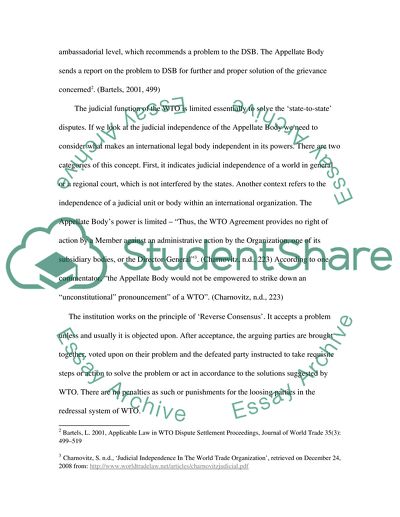Cite this document
(To What Extent Are the WTO Panel and Appellate Body Process Judicial Term Paper, n.d.)
To What Extent Are the WTO Panel and Appellate Body Process Judicial Term Paper. Retrieved from https://studentshare.org/macro-microeconomics/1719327-to-what-extent-are-the-wto-panel-and-appellate-body-process-judicial-in-nature-critically-assess-their-role-in-shaping-the-international-trading-system
To What Extent Are the WTO Panel and Appellate Body Process Judicial Term Paper. Retrieved from https://studentshare.org/macro-microeconomics/1719327-to-what-extent-are-the-wto-panel-and-appellate-body-process-judicial-in-nature-critically-assess-their-role-in-shaping-the-international-trading-system
(To What Extent Are the WTO Panel and Appellate Body Process Judicial Term Paper)
To What Extent Are the WTO Panel and Appellate Body Process Judicial Term Paper. https://studentshare.org/macro-microeconomics/1719327-to-what-extent-are-the-wto-panel-and-appellate-body-process-judicial-in-nature-critically-assess-their-role-in-shaping-the-international-trading-system.
To What Extent Are the WTO Panel and Appellate Body Process Judicial Term Paper. https://studentshare.org/macro-microeconomics/1719327-to-what-extent-are-the-wto-panel-and-appellate-body-process-judicial-in-nature-critically-assess-their-role-in-shaping-the-international-trading-system.
“To What Extent Are the WTO Panel and Appellate Body Process Judicial Term Paper”, n.d. https://studentshare.org/macro-microeconomics/1719327-to-what-extent-are-the-wto-panel-and-appellate-body-process-judicial-in-nature-critically-assess-their-role-in-shaping-the-international-trading-system.


